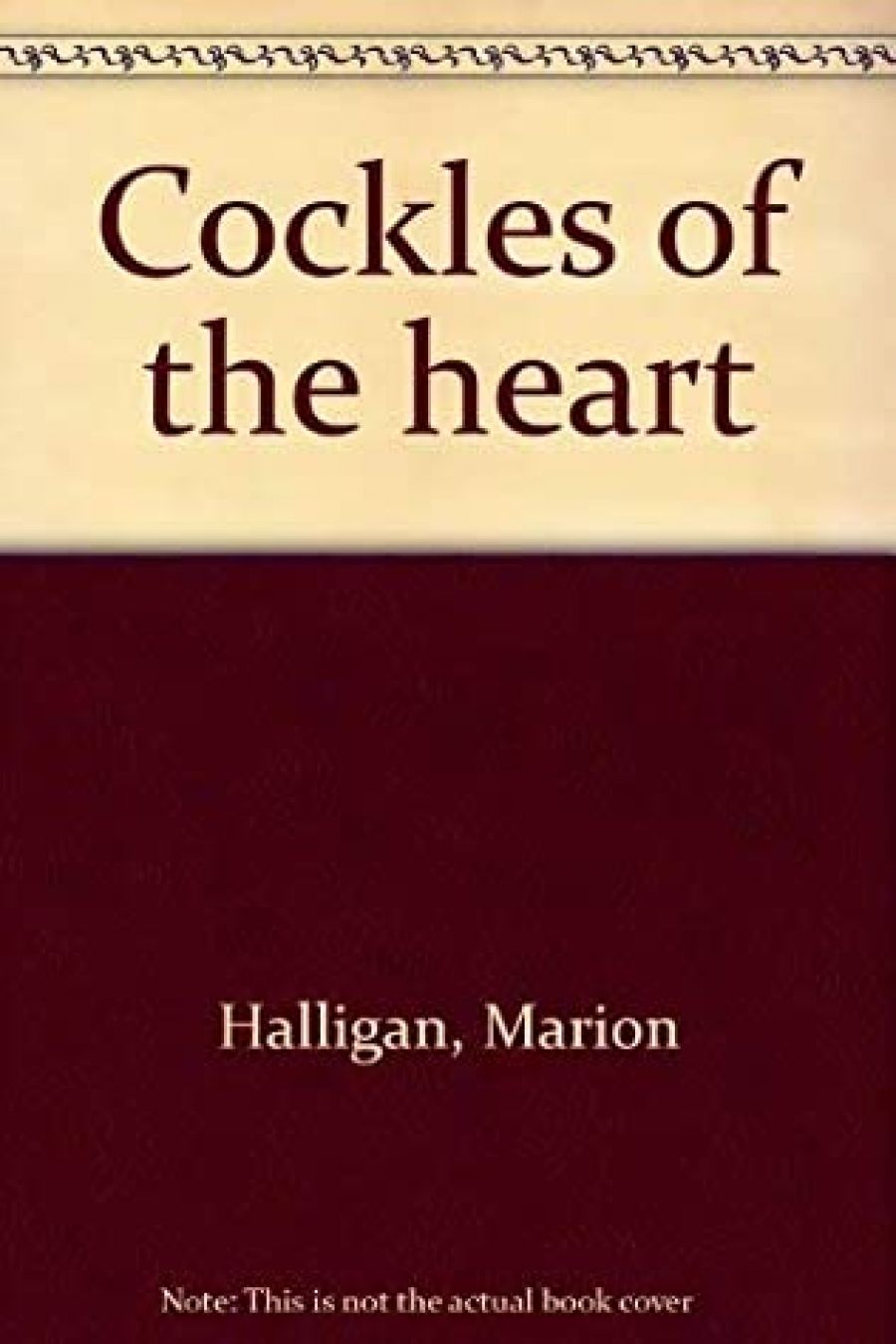
- Free Article: No
- Contents Category: Fiction
- Review Article: Yes
- Online Only: No
- Custom Highlight Text:
Until I reviewed Marion Halligans novel Lovers’ Knots, I didn’t really know much about what a lover’s knot was. And now I know more than I used to know about the word ‘cockle’.
- Book 1 Title: Cockles of the Heart
- Book 1 Biblio: Minerva, $15.95 pb, 266 pp
Marion Halligan, a modern pilgrim in search not so much of the blessing of St James as of the spiritual and temporal graces of landscape, food, wine and stories, travels with her husband from Paris to Spain by car, following part of the pilgrims’ way. Cockles of the Heart is a warm, charming, conversational record of her journey, and includes her reflections and observations as well as some regional tales and recipes. She set out to go to Santiago de Compostela but, to my great astonishment, when she got to Puente de la Reina, not far from Pamplona, she turned around and went back to France, to the ‘dear old familiar French language’. I still can’t believe she did this – because I was so eager to read what she thought about the place which is one of my own favourites.
For Marion Halligan to turn round at Puente de la Reina is interesting, because, as she says, the threads of the pilgrim route ‘form into a knot’ right there. Travellers’ knots? Her favourite place in all the world, except for home, she says, is Severac, a village north-west of Nantes. Marion’s novel Spider Cup was inspired by Severac, and she has a chapter in Eat My Words set there. Clearly Severac warms the cockles of her heart right up; so who can blame her for returning? She and her husband go always to the same house which is waiting for them, as if in a fairy tale.
The valley is warm and full of sunlight, the fields already gold so early in the season. The house with its thick stone walls is still cool, and fresh though its been shut up for months … You could think Severac was an enchanted house, because every time you arrive, there is its familiar smell waiting for you, homely, spicy, cared for, you breathe it in and with it comes … wellbeing.
She is in love with the house, with the castle, with the light across the valley, and the novel Spider Cup, she says, is full of the desire implicit in this love.
Cockles of the Heart is ordered in little bite-sized portions each with its own heading; there is an index to the recipes which are marked in the text by the image of a scallop shell. I think the Halligans ate and drank better than most pilgrims of yesterday or today. This is not to say they were always in fancy restaurants, not at all; the cuisine ranges from picnics of local wines and foods in the bedroom to restaurants both good and bad. When looking for a good inn for food and rest, Marion tells us, look first at the quality of the geraniums in the window boxes and flower beds. ‘An establishment without decent geraniums is not the kind of place you want to go to.’ The author’s pleasure in the sights, sounds, foods, and legends she encounters on her journey becomes the reader’s pleasure in the text.
The stories gathered along the way are sometimes history, sometimes strange legends from days gone by, sometimes the recounting of facts such as the importance of corks in the original discovery of champagne. Corks were once not used in French wine-making. A monk from the Abbey of Hautvillers went to Compostela and returned with some corks. Dom Perignon realised that he could now contain the effervescence of wine in the bottle, and so, to cut a long story short, he was able to make champagne.
This is an unusual book – part diary, part guide, part recipe book, part story book. It is also lyrical and intimate, a sort of murmured and loving hymn to the beauties of nature and of human ingenuity. No sooner do we learn of the wide slow river and the mist in the valley, than we hear of the fine leather industry that developed from the cheese industry – if you are going to make Roquefort cheese you have to rob the baby lambs of their milk and so you kill the lambs and make terrific gloves from their skins. And then you hear of the sewing machine belt of leather that Marion Halligan once got to use on the machine in Severac. The machine was built in 1890 and Marion had to follow the French instructions before she could use it to make skirts for herself and her daughter.
The church at Conques is ‘made of golden stone, set in fields dried golden by the sun, its roofs are terracotta, and inside its graveyard wall are rows of dark green poplars.’ The writer is offering the reader a generous invitation to travel with her, and to bask in her rich descriptions of the details along the way.


Comments powered by CComment